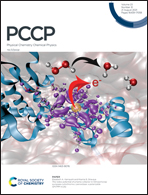Time dependent reduced density matrix functional theory at strong correlation: insights from a two-site Anderson impurity model
Abstract
The one-body density matrix has recently attracted considerable attention as a promising key quantity for the description of systems out of equilibrium. Its time evolution is given in terms of the two-body density matrix, and thus the central challenge is to find approximations to the latter. An extra layer of difficulty is added when dealing with strong electron correlations. In this work, we explore precisely this regime by looking at the two-site Anderson impurity model as a case study. To address the system's dynamics, we use an adiabatic approximation based on the exact ground-state two-body density matrix. We find that this adiabatic extension does not reproduce the exact results even for a slow switch-on of the external perturbation, and we trace back this behavior to the lack of an accurate imaginary part of the adiabatic approximation to the two-body density matrix. The attempt to restore an approximate imaginary part through a Hilbert transform of the real part works well only for very short times, but quickly deteriorates for longer times, with the one-body density matrix being pushed out of its N-representability domain. Our results thus pose an important constraint on practical prescriptions to perform the time evolution of the one-body density matrix.



 Please wait while we load your content...
Please wait while we load your content...